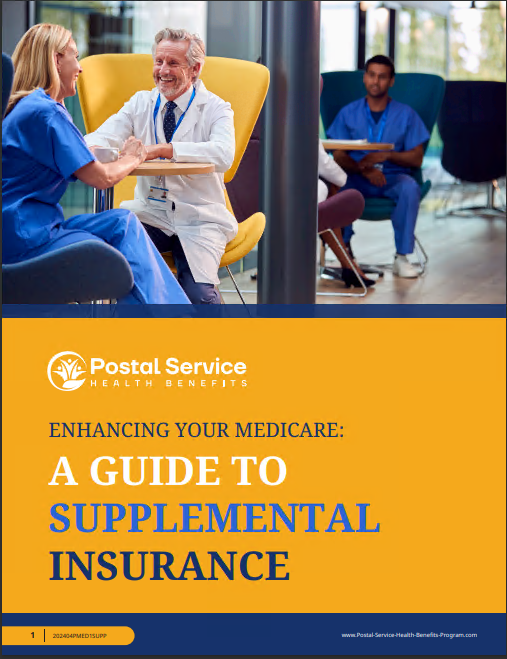Key Takeaways:
- The Postal Service Health Benefits (PSHB) program, introduced under the Postal Service Reform Act of 2022, will replace the Federal Employees Health Benefits (FEHB) program for USPS employees starting January 1, 2025.
- The PSHB Open Season runs from November 11 to December 9, 2024, offering USPS employees and retirees the chance to review their health plans and make necessary changes.
Welcome to the PSHB Era: The Big Shift Begins
It’s an exciting time for USPS employees, with a significant change on the horizon. Starting January 1, 2025, the familiar Federal Employees Health Benefits (FEHB) program will be replaced by the new Postal Service Health Benefits (PSHB) program. This transition marks a significant step in USPS history, one that stems from the Postal Service Reform Act of 2022. The upcoming Open Season, from November 11 to December 9, 2024, will be your opportunity to review, compare, and enroll in a PSHB plan that fits your needs.
Why the Change?
This shift to PSHB isn’t random—it’s driven by legislative changes aimed at making health benefits for USPS employees more tailored and cost-effective. With the Postal Service Reform Act of 2022, the goal is to streamline the system, specifically for postal workers, while maintaining comprehensive healthcare coverage. FEHB had long served federal employees, but PSHB promises a more focused system that directly addresses the needs of USPS workers and retirees.
If you’re currently enrolled in FEHB, it’s important to know you will automatically be transitioned to a similar PSHB plan during the 2024 Open Season. This automatic switch should ensure minimal disruption, but you’ll still want to take the time to review your options, particularly if your healthcare needs have changed.
What Stays the Same?
Not everything is changing with PSHB. If you’re worried about your dental or vision coverage through FEDVIP (Federal Employees Dental and Vision Insurance Program), there’s good news—those plans will remain the same. FEDVIP offers coverage for dental exams, cleanings, and prescription eyewear, and that won’t change with the introduction of PSHB. So, even with the switch, you won’t have to think about any changes to those aspects of your healthcare.
Breaking Down PSHB Premiums
As always, understanding the costs associated with your health plan is key. Let’s break down some average PSHB premiums for 2025 so you can get a feel for what’s coming.
For biweekly premiums, here’s a general idea:
- Self Only: Around $397.35
- Self Plus One: Around $858.89
- Self and Family: Around $934.65
Of course, the USPS continues to contribute 72% toward the total premium, so your share, depending on your coverage level, will be around 28%. On average, that looks like this:
- Self Only: About $111.26 per pay period
- Self Plus One: Roughly $240.49 per pay period
- Self and Family: About $261.70 per pay period
Over the course of a year (26 pay periods), the costs can add up, but you’ll still benefit from the employer’s significant contribution toward your premium. It’s worth considering how these costs will fit into your overall budget, especially as healthcare needs can change over time.
PSHB and Medicare: How They Work Together
For USPS retirees, the integration of PSHB with Medicare is an important factor to consider. If you’re eligible for Medicare (typically at age 65), you will need to enroll in Medicare Part B to maintain your PSHB coverage—unless you retire before January 1, 2025. In that case, you won’t be required to enroll, but it’s always worth considering the cost benefits of Medicare and PSHB working in tandem.
For many, signing up for Medicare Part B alongside PSHB offers additional savings, including reduced out-of-pocket expenses, waived deductibles, and even premium reimbursement for Part B. These perks can significantly cut down healthcare costs in retirement.
If you’re part of a group that benefits from VA care, Indian Health Services (IHS), or lives outside the U.S., you may be exempt from this Medicare requirement.
Special Enrollment Period for Medicare
The USPS held a Special Enrollment Period (SEP) for Medicare Part B from April to September 2024. This was a great opportunity for USPS retirees to enroll in Medicare Part B without facing penalties for late enrollment. This SEP covered many retirees, ensuring they can transition smoothly into the PSHB system when it launches. If you missed this window, make sure to consider how this may affect your future health benefits.
What About Prescription Drugs?
Another critical aspect of PSHB for Medicare-eligible participants is the inclusion of Medicare Part D prescription drug coverage. This eliminates the need to purchase separate Part D coverage, which can be a relief for retirees managing chronic conditions or high prescription costs. The integration of Part D into PSHB simplifies your health plan and can lead to overall cost savings, especially for those with significant prescription drug needs.
Keeping Your Options Open: The Comparison Tool
USPS employees and retirees have diverse healthcare needs, and fortunately, the OPM plan comparison tool will be available during Open Season. This tool will help you weigh your options, compare plans, and find the one that fits best with your needs and budget. Whether you’re considering family coverage, need robust prescription coverage, or are looking for cost-efficient options, this tool will be your best friend during Open Season.
Make sure to take advantage of this tool to ensure you’re getting the coverage that best aligns with your health needs, especially considering the changes coming with PSHB.
FEDVIP: Dental and Vision Coverage Continue
Let’s not forget about FEDVIP, which remains unchanged through this transition. Whether you’re already using FEDVIP for dental or vision services—or plan to in the future—it’s good to know that this coverage will stay intact. The only thing to watch out for is a slight increase in premiums in 2025: Dental premiums are expected to rise by about 2.97%, while vision premiums will see a modest 0.87% increase.
That said, these increases are relatively minor compared to the rising costs in other areas of healthcare, so there’s some relief in knowing that these essential services will remain affordable.
Plan Your Transition During Open Season
So, what should you do as Open Season approaches? First, mark the dates: November 11 to December 9, 2024. During this time, you’ll have the opportunity to review and make changes to your health plan. While you will automatically be moved to a PSHB plan that mirrors your current FEHB coverage, don’t miss the chance to ensure that plan still works for you and your family.
This is your time to make adjustments, whether it’s upgrading your plan to cover more of your anticipated medical costs, switching to a lower-cost option, or even adding dental or vision coverage if you haven’t already.
The Launch of PSHB Is Just the Beginning
The launch of PSHB on January 1, 2025, marks the beginning of a new era for USPS employees and retirees. It’s a monumental shift, but with careful planning and consideration during Open Season, you can ensure that this transition is smooth and beneficial. By understanding the key differences between PSHB and FEHB, leveraging the comparison tools available, and considering your own healthcare needs, you’ll be well-equipped to navigate this change confidently.
A Health Plan Tailored for USPS
The introduction of PSHB brings USPS employees and retirees a more tailored approach to healthcare benefits. The combination of continued employer contributions, integration with Medicare, and the option to maintain FEDVIP dental and vision coverage means you’ll still have access to comprehensive healthcare services. Just make sure you take advantage of Open Season to choose the right plan for your situation. Your health and peace of mind depend on it.







